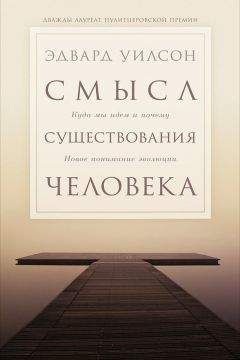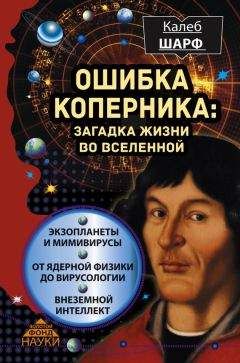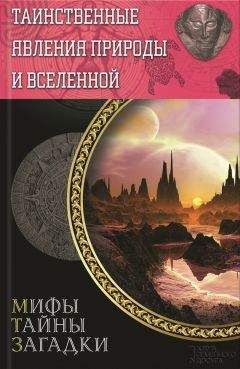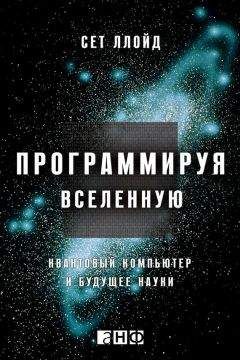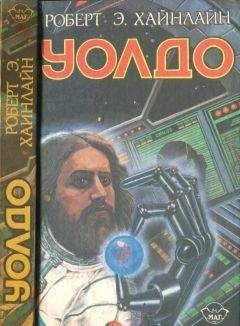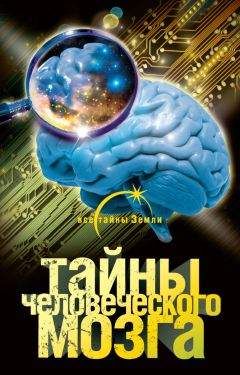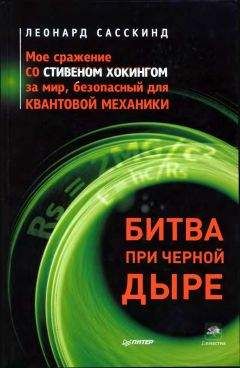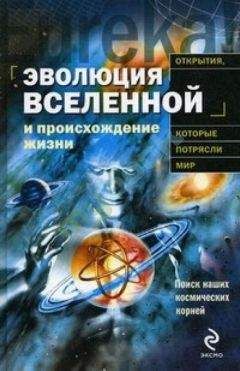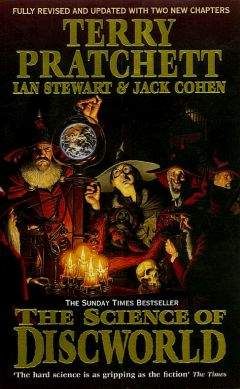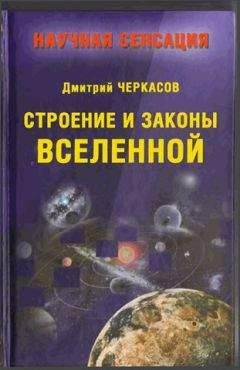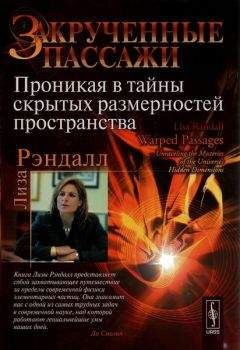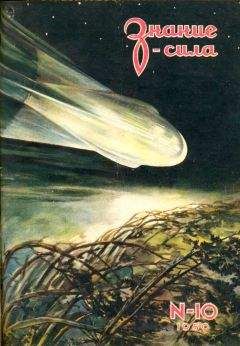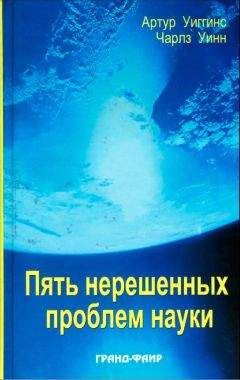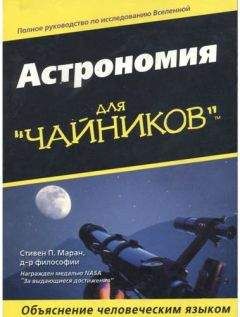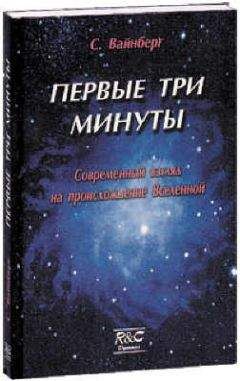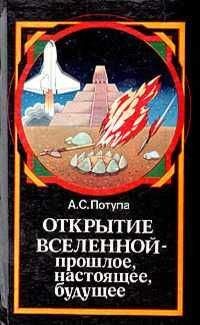Фред Адамс - Пять возрастов Вселенной
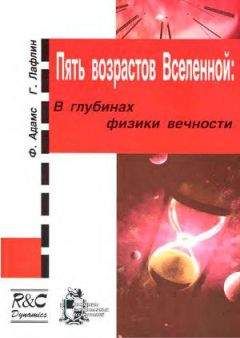
Скачивание начинается... Если скачивание не началось автоматически, пожалуйста нажмите на эту ссылку.
Жалоба
Напишите нам, и мы в срочном порядке примем меры.
Описание книги "Пять возрастов Вселенной"
Описание и краткое содержание "Пять возрастов Вселенной" читать бесплатно онлайн.
В конце двадцатого века Фред Адамс и Грег Лафлин завладели вниманием всего мира, выделив пять временных эпох. Этих авторов считают создателями долгосрочного проекта эволюции Вселенной. Масштабы их творения, охватившего полную историю космоса от его рождения до гибели, и глубина рассмотренных научных вопросов внушают благоговейный трепет. Однако «Пять возрастов Вселенной» — не просто справочник, описывающий физические процессы, которые руководили нашим прошлым и будут формировать наше будущее, это истинная эпопея. С ее помощью можно совершить фантастическое путешествие в физику вечности, не покидая Земли. Это единственная биография Вселенной, которая вам когда-либо понадобится.
Книга предназначена для широкого круга читателей.
Заключение
Долгосрочное расширение Вселенной зависит от множества факторов, включая вклад, который вносит в общую плотность энергии вакуум (Weinberg, 1989; Carroll, Press and Turner, 1992), массовую плотность Вселенной (недавний обзор см. в работе Turkok, 1997; см. также Loh and Spillar, 1986) и многие другие соображения (например, Ellis and Rothman, 1993; Gott, 1993; Grischuk and Zel'dovich, 1978).
Хотя современные данные астрономических наблюдений свидетельствуют о том, что Вселенная продолжит расширяться (Dekel et al., 1997), мы вкратце рассматриваем сценарий, согласно которому Вселенная, или некоторая ее часть, переживет повторное сжатие. Классическое изложение физических событий, ведущих к Большому сжатию, см. в статье Риса (Rees, 1969).
Тонкая настройка нашей Вселенной обсуждается во многих контекстах и связана с «антропным космологическим принципом» (более подробное изложение см. в трудах Barrow and Tipler, 1986; Carr and Rees, 1979). Идея о том, что наша Вселенная — всего лишь одна из множества возможных, в настоящее время вызывает все более пристальное внимание космологии (например, Rees, 1981); последняя популярная трактовка мультиверса и его следствий представлена в книге Риса (Rees, 1997).
На идее вечной инфляции и вечной сложности часто останавливался А.Линде (см., например, Linde, 1986, 1988, 1989, 1990, 1994; см. также Vilenkin, 1983). Понятие дарвиновской эволюции вселенных ввел и описал в своей последней книге Л. Смолин (Smolin, 1997; см. также Rees, 1997).
Ссылки и дополнительная литература
Adams F.С. 1993, General solutions for tunneling of scalar fields with quartic potentials, Phys. Rev. D 48, 2800.
Adams F.C. and M. Fatuzzo, 1996, A theory of the initial mass function for star formation in molecular clouds, Astrophys. J. 464, 256.
Adams F.C. and G. Laughlin, 1997, A dying universe: The long-term fate ana evolution of astrophysical objects, Rev. Mod. Phys. 69, 337.
Adams F.C. and G. Laughlin, 1998, The future of the universe, Sky and Telescope 96, 32.
Adams F.C. G. Laughlin, M. Mbonye, and M. J. Perry, 1998, The gravitational demise of cold degenerate stars, Phys. Rev. D 58, 083003.
Albrecht A. and P.J. Steinhardt, 1982, Cosmology for grand unified theories with radiatively induced symmetry breaking, Phys. Rev. Lett. 48, 1220.
Alpher R.A., H. Bethe and G. Gamow, 1948, The origin of chemical elements. Phys. Rev. 73, 803.
Bahcall J.N., 1989, Neutrino Astrophysics (Cambridge: Cambridge Univ. press).
Bardeen J.M., P.J. Steinhardt and M.S. Turner, 1983, Spontaneous creation of almost scale-free density perturbations in an inflationary universe, Phys. Rev. D 28, 679.
Barrow J.D. and F.J. Tipler, 1978, Eternity is unstable, Nature 276, 453.
Barrow J.D. and F.J. Tipler, 1986, The Anthropic Cosmological Principle (Oxford: Oxford Univ. Press).
Bekenstein J.D., 1981, A universal upper bound to the entropy to energy ratio for bounded systems, Phys. Rev. D 23, 287.
Binney J. and S. Tremaine, 1987, Galactic Dynamics (Princeton: Princeton Univ. Press).
Birrell N.D. and P.C.W. Davies, 1982, Quantum Fields in Curved Space (Cambridge: Cambridge Univ. Press).
Blau S.K., E.I. Guendelman and A. H. Guth, 1987, Dynamics of false-vacuum bubbles, Phys. Rev. D 35, 1747.
Bond J.R., B.J.Carr and C.J.Hogan, 1991, Cosmic backgrounds from primeval dust, Astrophys. J. 367, 420.
Boss A. V. Mannings and S.Russell, 1999, editors, Protostars and Planets IV (Tucson: Univ. Arizona Press).
Burrows A., W.B. Hubbard, D. Saumon and J.I. Lunine, 1993, An expanded set of brown dwarf and very low mass star models, Astrophys. J. 406, 158.
Burrows A. and J. Liebert, 1993, The science of brown dwarfs, Rev. Mod. Phys. 65, 301.
Carr B.J., 1994, Baryonic dark matter, Ann. Rev. Astron. Astrophys. 32, 531.
Carr B.J., 1976, Some cosmological consequences of primordial black hole evaporation, Astrophys. J. 206, 8.
Carr B.J. and M.J. Rees, 1979, The anthropic principle and the structure of the physical world, Nature 278, 605.
Carroll S. M., W. H. Press and E. L. Turner, 1992, The cosmological constant, Ann. Rev. Astron. Astrophys. 30, 499.
Chandrasekhar S., 1939, Stellar Structure (New York: Dover).
Clausius R., 1865, Ann. Physik 125, 353.
Clausius R., 1868, Phil. Mag. 35, 405.
Clayton D.D., 1983, Principles of Stellar Evolution and Nucleosynthesis (Chicago: Univ. Chicago Press).
Coleman S., 1977, The fate of the false vacuum: 1. Semiclassical theory, Phys. Rev. D 15, 2929.
Coleman S., 1985, Aspects of Symmetry (Cambridge: Cambridge Univ. Press).
Coleman S. and F. DeLuccia, 1980, Gravitational effects on and of vacuum decay, Phys. Rev D 21, 3305.
Comte A., 1835, Cours de la Philosophie Positive, 2, 2 (Paris: Bachelier; repr. by Editions Anthropos, Paris 1968).
Crone M.M. and M. Sher, 1990, The environmental impact of vacuum decay. Am. J. Phys. 59, 25.
Croswell K., 1997, Planet Quest (New York: The Free Press).
Davies P.C.W., 1982, The Accidental Universe (Cambridge: Cambridge Univ. Press).
Davies P.C.W., 1994, The Last Three Minutes (New York: Basic Books).
Dekel A., D. Burstein and S.D.M. White, 1997, Measuring omega, in Critical Dialogues in Cosmology, ed. N. Turok (Singapore: World Scientific), p. 175.
Dicus, D.A., J.R. Letaw, D.C. Teplitz, and V.L. Teplitz, 1982, Effects of proton decay on the cosmological future, Astrophys. J. 252, 1.
Diehl E., G.L. Kane, C. Kolda and J.D. Wells, 1995, Theory, phenomenology, and prospects for detection of supersymmetric dark matter, Phys. Rev. D 52, 4223.
Dolgov A.D., 1992, Non-GUT baryogenesis, Physics Reports 222, 309.
Dyson F.J., 1979, Time without end: Physics and biology in an open universe, Rev. Mod. Phys. 51, 447.
Dyson F.J., 1988, Infinite in All Directions (New York: Harper and Row). Eddington A. S., 1931, Nature 127, 447.
Ellis G.F.R. and T. Rothman, 1993, Lost horizons, Am. I. Phys. 61, 883.
Ellis G.F.R. and D.H. Coule, 1994, Life at the end of the universe, Gen. Ret. and Grav. 26, 731.
Farhi E.H., A.H. Guth and J. Guven, 1990, Is it possible to create a universe in the laboratory by quantum tunneling? Nuclear Phys. B339, 417.
Faulkner J. and R.L. Gilliland, 1985, Weakly interacting massive particles and the Solar neutrino flux, Astrophys. J. 299, 994.
Feinberg G., 1981, The coldest neutron star, Phys. Rev. D 23, 3075.
Feinberg G., M. Goldhaber and G. Steigman, 1978, Multiplicative baryon-number conservation and the oscillation of hydrogen into antihydrogen, Phys. Rev. D 18, 1602.
Frautschi S., 1982, Entropy in an. expanding universe. Science 217, 593.
Gaier T., et al., 1992, A degree-scale measurement of anisotropy of the cosmic background radiation, Astrophys. J. Lett. 398, LI.
Gamow G., 1946, Expanding universe and the origin of elements, Phys. Rev. 70, 572.
Genzel R., et al., 1996, The dark mass concentration in the central parsec of the Milky Way, Astrophys. J. 472, 153.
Goity J.L. and M. Sher, 1995, Bounds on ΔB = 1 couplings in the supersymmetric standard model, Phys. Lett. 346 B, 69.
Golimowski D.A., T. Nakajima, S.R. Kulkarni and B.R. Oppenheimer, 1995, Detection of a very low mass companion to the astrometric binary Gliese 105A, Astrophys. J. Lett. 444, L101.
Gott J.R., 1993, Implications of the Copernican Principle for our future prospects, Nature 363, 315.
Gould A., 1987, Resonant enhancements in weakly interacting massive particle capture by the Earth, Astrophys. J. 321, 571.
Grischuk L.P. and Ya.B. Zel'dovich, 1978, Long wavelength perturbations of a Friedmann universe, and anisotropy of the microwave background, Sov. Astron. 22, 125.
Guth A., 1981, The inflationary universe: A possible solution to the horizon and flatness problems, Phys. Rev. D 23, 347.
Guth A., 1997, The Inflationary Universe: The Quest for a New Theory of Cosmic Origins (Reading, MA: Addison-Wesley).
Guth A.H. and S.-Y. Pi, 1982, Fluctuations in the new inflationary universe, Phys. Rev. Lett. 49, 1110.
Hansen C.J. and S.D. Kawaler, 1994, Stellar Interiors: Physical Principles, Structure, and Evolution (New York: Springer).
Hawking S.W., 1974, Black hole explosions? Nature 248, 30.
Hawking S.W., 1975, Particle creation by black holes, Comm. Math. Phys. 43, 199.
Hawking S.W., 1976, Black holes and thermodynamics, Phys. Rev. D 13, 191.
Hawking S.W., 1982, The development of irregularities in a single bubble inflationary universe, Phys Lett. 115 B, 295.
Hawking S.W., 1987, Quantum coherence down the wormhole, Phys. Lett. 195 B, 337.
Hawking S.W., D.N. Page and C.N. Pope, 1979, The propagation of particles in spacetime foam, Phys. Lett. 86 B, 175.
Helmholz H. von, 1854, On the Interaction of Natural Forces.
Hooft G., 1976, Symmetry breaking through Bell-Jackiw anomalies, Phys. Rev. Lett. 37, 8.
Hubbell J.H., H.A. Grimm and I. Overbo, 1980, Pair, triplet, and total atomic cross sections for 1 MeV-100 GeV photons in elements Z= 1 to 100, J. Phys. Chem. Ref. Data 9, 1023.
Hut P. and M.J. Rees, 1983, How stable is our vacuum? Nature 302,508.
Islam J.N., 1977, Possible ultimate fate of the universe, Quart. J. R. Astron. Soc. 18, 3.
Islam J.N., 1979, The ultimate fate of the universe, Sky and Telescope 57, 13.
Islam J.N., 1983, The Ultimate Fate of the Universe (Cambridge: Cambridge Univ Press).
Jungman G., M. Kamionkowski and K. Griest, 1996, Supersymmetric dark matter, Physics Reports 267, 195.
Kane G.L., 1993, Modern Elementary Particle Physics (Reading, MA: Addison-Wesley).
Kane G.L., 1995, The Particle Garden (Reading, MA: Addison-Wesley).
Kant I., 1755, Allegmeine Naturgeschichte und Theorie des Himmels.
Kennicutt R.C., P. Tamblyn and C.W. Congdon, 1994, Past and future star formation in disk galaxies, Astrophys. J. 435, 22.
Kippenhahn R. and A. Weigert, 1990, Stellar Structure and Evolution (Berlin: Springer).
Knickerbocker W.S., 1927, Classics of Modern Science (Boston: Beacon Press).
Kolb E.W. and M.S.Turner, 1990, The Early Universe (Redwood City, CA: Addison- Wesley).
Kormendy J., et al., 1997, Spectroscopic evidence for a supermassive black hole in NCG 4486B, Astrophys. J. 482, L139.
Krauss L., 1986, Dark matter in the universe, Scientific American 255, 58.
Krauss L.M., M. Srednicki and F. Wilczek, 1986, Solar system constraints and signature for dark matter candidates, Phys. Rev. D 33, 2079.
Langacker P., 1981, Grand unified theories and proton decay, Physics Reports 72, 186.
Laplace P.S., 1796, Exposition du systeme du monde (Paris).
Laughlin G. and F.C. Adams, 1998, The modification of planetary orbits in dense stellar clusters, Astrophys. J. Lett. 508, L171.
Laughlin G., P. Bodenheimer and F.C. Adams, 1997, The end of the main sequence, Astrophys. J. 482, 420.
Lightman A.P. and S.L. Shapiro, 1978, The dynamical evolution of globular clusters, Rev. Mod. Phys. 50, 437.
Linde A.D., 1982, A new inflationary universe scenario: A possible solution of the horizon, flatness, homogeneity, isotropy, and primordial monopole problems, Phys. Lett. 108 B, 389.
Linde A.D., 1983a, Chaotic inflation, Phys. Lett. 129 B, 177.
Linde A.D., 1983b, Decay of the false vacuum at finite temperature, Nucl. Phys. B216, 421.
Linde A.D., 1986, Eternally existing self-reproducing chaotic inflationary universe, Phys. Lett. 175B, 395.
Linde A.D., 1988, Life after inflation, Phys. Lett. 211 B, 29.
Linde A.D., 1989, Life after inflation and the cosmological constant problem, Phys. Lett. 227 B, 352.
Linde A.D., 1990, Particle Physics and Inflationary Cosmology (New York: Harwood Academic).
Linde A., 1994, The self-reproducing inflationary universe, Scientific American 271, 48.
Loh E. and E. Spillar, 1986, A measurement of the mass density of the universe, Astrophys. J. Lett. 307, LI.
Manchester R.N. and J.H. Taylor, 1977, Pulsars (San Francisco: W. H. Freeman).
Marcy G.W. and R.P. Butler, 1996, A planetary companion to 70 Virginis, Astrophys. J. Lett. 464, L147.
Marcy G.W. and R.P. Butler, 1998, Detection of extrasolar giant planets, Ann. Rev. Astron. Astrophys. 36, 57.
Mayor M. and D. Queloz, 1995, A Jupiter-mass companion to a solar-type star, Nature 378, 355.
Meyer S.S., E.S. Cheng and L.A. Page, 1991, A measurement of the large-scale cosmic microwave background anisotropy at 1.8 millimeter wavelength, Astrophys. J. Lett. 410, L57.
Mihalas D. and J. Binney, 1981, Galactic Astronomy: Structure and Kinematics (New York; W. H. Freeman).
Miller G.E. and J.M. Scalo, 1979, The initial mass function and stellar birthrate in the solar neighborhood, Astrophys. J. Suppl. 41, 513.
Misner C.W., K.S. Thorne and J.A. Wheeler, 1973, Gravitation (San Francisco: W. H. Freeman).
Mohapatra R.N. and R.E. Marshak, 1980, Local B-L symmetry of electroweak interactions, Majorana neutrinos, and neutron oscillations, Phys. Rev. Lett. 44, 1316.
Narayan R., D. Barret and J.E. McClintock, 1997, Advection-dominated accretion model of black hole V404 Cygni in quiescence, Astrophys. J. 482, 448.
Ohanian H.C. and R. Ruffini, 1994, Gravitation and Spacetime (New York: W. W. Norton).
Oppenheimer B.R., S.R. Kulkarni, К. Matthews and Т. Nakajima, 1995, The infrared spectrum of the cool brown dwarf G1229B, Science 270, 1478.
Page D.N., 1980, Particle transmutations in quantum gravity, Phys. Lett. 95 B, 244.
Page D.N. and M.R. McKee, 1981a, Matter annihilation in the late universe, Phys. Rev. D 24, 1458.
Page D.N. and M.R. McKee, 1981b. Eternity matters, Nature 291, 44.
Pais A., 1986, Inward Bound (Oxford: Oxford Univ. Press).
Particle Data Group, 1998, Particle physics booklet, European Phys. J. C3, 1.
Peebles P.J.E., 1993, Principles of Physical Cosmology (Princeton: Princeton Univ. Press).
Peebles P.J.E., 1994, Orbits of nearby galaxies, Astrophys. J. 429, 43.
Penzias A.A. and R.W. Wilson, 1965, A measurement of excess antenna temperature at 4080 Mc/s, Astrophys. J. 142, 419.
Подписывайтесь на наши страницы в социальных сетях.
Будьте в курсе последних книжных новинок, комментируйте, обсуждайте. Мы ждём Вас!
Похожие книги на "Пять возрастов Вселенной"
Книги похожие на "Пять возрастов Вселенной" читать онлайн или скачать бесплатно полные версии.
Мы рекомендуем Вам зарегистрироваться либо войти на сайт под своим именем.
Отзывы о "Фред Адамс - Пять возрастов Вселенной"
Отзывы читателей о книге "Пять возрастов Вселенной", комментарии и мнения людей о произведении.





